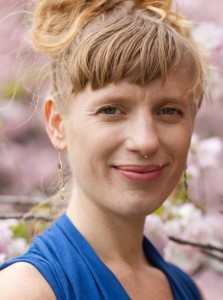Carrie practices a style of acupuncture called Biodynamic Acupuncture that she developed from her training in traditional Chinese and Japanese acupuncture, and biodynamic craniosacral therapy.
During a session, Carrie determines a treatment plan, places the needles, and then remains in the room with the client, employing biodynamic principles and techniques that include gentle contact with various places on the body. This approach facilitates a profound experience of deep centering and contact with our core nature and inherent health.
What is Acupuncture?
Acupuncture is an elegant and sophisticated system of diagnosis and treatment whose effects can be felt at all levels of embodiment: the physical, emotional, mental, and spiritual. Its time-honored principles are derived from the observation that humankind is part of the natural world, and subject to its laws and influence. The purpose of acupuncture is to balance the internal ecology of the body, optimize energy flow, and harmonize the body with its external environment.
The placement of fine, sterile, disposable needles at strategic and potent sites within the energetic matrix of the body facilitates the harmonious flow of qi (vital energy of life), which is necessary to cultivate and maintain ideal conditions for health and well-being.
How Acupuncture Heals
The effects of acupuncture bring order and healing to the disorganized nature of disease processes and stress-induced dysfunction, and contribute to the creation of a robust internal environment with a greater capacity to resist disease and nurture health.
Acupuncture is used to treat specific conditions in all major systems: digestive, respiratory, musculoskeletal, cardiovascular, neurological, emotional, immune, endocrine, and women’s and men’s reproductive health, in addition to allergies, addictions, insomnia and stress-induced tension. It stimulates detoxification and supports the optimal functioning of the body throughout all stages of life.
Styles of Acupuncture
Traditional Chinese acupuncture employs a detailed methodology of diagnosis and treatment that incorporates tongue and pulse evaluation, medical history, interview and examination, as well as analysis of the inter-related energies and substances of the body: Yin, Yang, Qi and Blood. Together, these observations reveal the dynamics of patterns and relationships that can benefit from acupuncture and/or Chinese herbal supplementation.
Japanese acupuncture favors pulse and abdominal diagnosis to determine the nature of the body’s imbalance. The treatment addresses both the “root” (fundamental energetic disturbance), and the “branch” (manifestation of symptoms). Needling occurs in two phases, and may include the burning of compressed herbs (moxibustion) over the acupuncture points.
